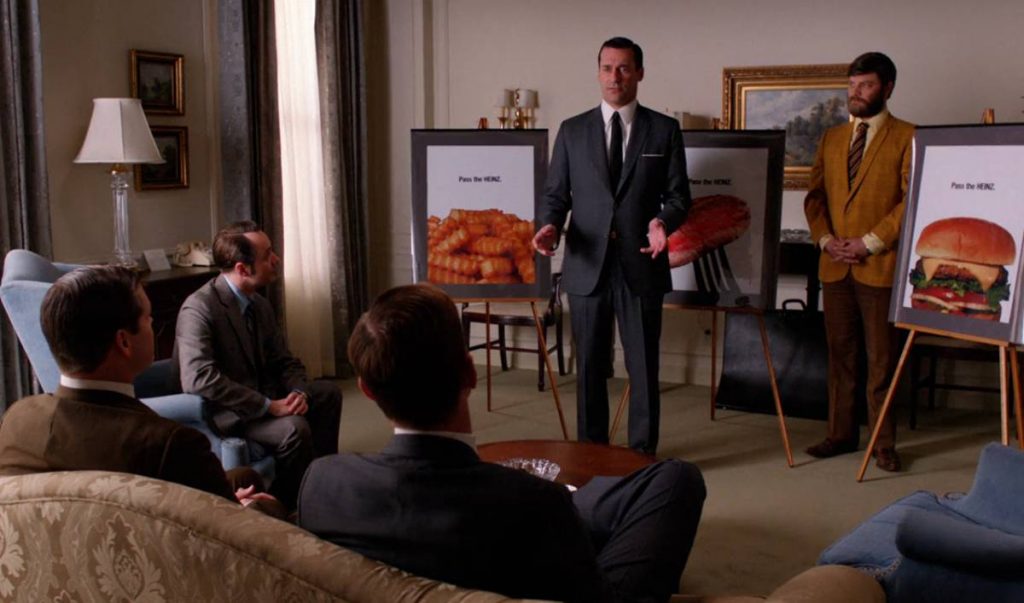Agency services and client needs have changed
As we meet with prospective clients we’ve noticed a shift in the structure of the agency-client relationship that is causing confusion.
Classically, companies had marketing departments headed by a Sales and Marketing director. That person would usually work with an ad agency, and they shared a common language and understanding of the goals, strategies and tactics they would need. If a vendor, such as a magazine, wanted to get more business, they went through the agency that worked with the client to make sure they got on the list of media that would be included. The agency vetted the outlets for the client and made recommendations on what would be in keeping with the overall direction of the campaign.

Then came the internet.
New platforms made an end-run around agencies. They hired their own teams to call on clients directly. Confused and desperate not to miss out, clients developed FOMO and started jumping from one shiny object to the next. Agencies panicked because someone was stepping between their client relationship.
How clients are structuring their marketing departments now
There are still corporations with CMOs and full marketing departments. They hire the big agencies and spend millions. They’re often focused on staying ahead of the curve, breaking new creative ground, making a bold statement. Typically, CMOs cycle through these jumping up their salaries. These kind of clients are looking for the big bold prize-winning idea that will get a lot of publicity to further their career and look amazing on their resumes. Whether they increase value for their employer is secondary.
Then there’s the smaller organizations we work with.
That’s not us. We usually meet with small companies with an in-house department or even a single (very harried) individual.
The single-person hire is usually told something like “do our social media,” and they’re hired chiefly because they are young and unafraid of social platforms. But after a while they hit the limit of what they can accomplish. For example, they may be great at creating posts but not trained in the analytics. Or they’re managing a stable of freelancers, who may or may not have an overview.
Or there’s the in-house agency that’s sprawled into a million tasks and has no time to look at the big picture. They’re usually serving several masters, trying to make everyone happy and just get the work out the door.
So if you’re a smaller company, a single-person hire looking for help or a in-house agency, how do you ask for the agency services that you need?
To get what you need, ask the right questions.
Recently I had a couple of new business experiences that got me questioning the process.
A lot of time was spent in pulling apart what the client was really asking for and what it needed to be, and how much value that was going to be, so I kinda worked up a framework, and I’m going to put it on my website so you can see it, but I kinda looked at three main bodies of needstates that most clients have these days.

Do you need something Tactical?
The first is tactical. And that’s anything that can be answered by the question, “I need X done. Do you do X?” I need a brochure, I need a postcard, I need a…a website whatever. If you’ve a tactical need like that you can work with a freelancer, you can work with a range of people.
On the client side you need to be prepared to give them
Your positioning
Your messaging
How you usually like things done
And so the burden is on the client side to create a lot of the information, to brief the person who’s going to do the execution. And that’s great for tactical and that’s one of the least expensive ways to execute something that you need for your company.
The next level of need is Strategic.
And that’s sort of answering the question, “We’re doing this, but is there a better way to do it? Are we missing something?” And that’s where you want someone to come in look at all the assets that you’re using, maybe give you analytics a good shake – sometimes we put those things in a drawer, we don’t really look at them, but they need some attention – and look at the framework of how we’re marketing to our clients, and maybe we’re missing a piece here or there. And kind of give us a nice fresh new plan for the year.
That’s a deeper dive, you’re going to have to be prepared to open up
your analytics,
share a lot of information with them,
and take the time that it takes
to let them give you a perspective based on what other people are doing that they work with, that’s more of a consultancy role so you need to compensate them appropriately.
And then the third level, Consultative or Visionary, where you’re asking the question, “Where should we go from here?”
This is a conversation often held with the CEO, who is charged with wrapping their arms around the future and staying ahead of competition.
Often when we talk to clients in this need state they talk about themselves like they’re little ugly ducklings, and we’re thinking, you could be a swan, you could be doing this amazing program, you could stand for something so much bigger than you think you are right now.
That kind of visionary thing requires a deeper relationship, more like the classic agency of record kind of relationship, where you give somebody the time to work with you. And you really need to pull things apart with them. Are you trying to sell the business, what are you goals? There are great wonderful creative people out there who can help you see your company in a whole new way.
We might be the one you’re looking for. Get it touch.
